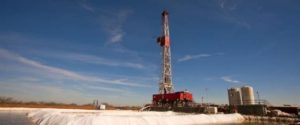 The U.S. oil supermajors are leading by example what shale drilling discipline should look like.
The U.S. oil supermajors are leading by example what shale drilling discipline should look like.
Neither ExxonMobil nor Chevron are rushing to boost production in the biggest American shale play, the Permian, despite the oil price rally this year that has sent WTI prices to above $60 per barrel.
The two biggest U.S. oil corporations are now prioritizing debt reduction and increased cash flows to pay down the excess debt they had accumulated last year when oil prices crashed. Their crude oil production targets in the Permian remain unchanged for the longer term to 2025, but their immediate goals for 2021 do not include increased capital expenditures or major output boost in the basin. Any rise in Permian oil production this year will come from cost efficiencies and improved recovery rates, not a race to drill for production’s sake, the supermajors said in their latest earnings releases and calls with analysts last week.
Smaller U.S. shale producers may be tempted to grow and pay off debts by boosting oil production at $60-plus oil. But the supermajors will not be rewarded by Wall Street if they abandon restraint now that they have started to generate profits and free cash flows after a year in which they slashed capex and wrote down billions of U.S. dollars worth of assets.
Exxon Bets On Efficiencies To Boost 2021 Permian Output
Exxon reiterated at last week’s Q1 earnings release its long-term 2025 target to boost production in the Permian to 700,000 barrels of oil equivalents per day from just below 400,000 boepd currently. But the supermajor increased its 2021 production guidance to between 410,000 boepd and 430,000 boepd from 400,000 boepd it guided in March. The increase, however, will not come from higher expenditures, but from performance improvements.
“We’re delivering greater efficiencies in the Permian. Efficiencies that are driving down costs for drilling and completions on proven recovery rates and growing production. Based on these improvements and without additional capital, we’ve increased our 2021 outlook to between 410,000 and 430,000 oil-equivalent barrels a day,” chairman and CEO Darren Woods said on the earnings call on Friday.
Excluding the impact of the Texas Freeze, Exxon’s first-quarter production in the Permian was unchanged compared to the fourth quarter of 2020 and has risen by around 20 percent since the first quarter of 2020.
The Permian operations became free cash-positive in the fourth quarter of 2020 and are expected to continue to generate free cash flows throughout the year, thanks to efficiencies and cost improvements, and despite the 35-percent capex reduction last year, Exxon says.
The oil giant, however, is not a hurry to add rigs or frac crews in the Permian this year. The Investor Day 2021 outlook in March guided for seven to ten rigs and five to seven frac crews in the play this year.
According to energy data provider Enverus, cited by Energy Intelligence, Exxon’s rig count in the Permian has declined by 85 percent over the past year. Exxon currently has seven operating rigs in the region, down from 46 rigs before the pandemic forced operators to slash capex, drilling activity, and production.
Chevron To Wait For “When The World Needs The Barrels”
The other U.S. supermajor, Chevron, has a more conservative approach to Permian volumes in the near term, but continues to believe it can pump as much as 1 million boepd from its vast acreage in the Permian in 2025, up from just below 600,000 boepd now.
Chevron will see a 5-percent decline in its Permian production this year if it stays at the current “low activity levels,” chief financial officer Pierre Breber said on the Q1 earnings call last week.
While the company is keeping its 1-million-boepd guidance for 2025 with over $3 billion in free cash flow from the Permian annually by 2025, it still thinks that now is not the time to raise capex and activity levels.
“Undoubtedly, we’re at the low investment levels that we’re doing right now, we’ll see some declines. That is okay. That is the correct response to an oversupplied market,” Breber said.
Chevron currently operates five rigs and two completion crews in the Permian, and could bring back a completion crew later this year that would help it to reduce the number of drilled and uncompleted wells (DUCs), he added.
“We intend to invest in there, but we’re going to do it at the right time,” Breber told analysts on the call.
There will be growth in the Permian “when the world needs the barrels,” he said.
Even though WTI Crude prices are currently at around $65 per barrel, the biggest U.S. oil firms are not chasing higher production and capital expenditures until they see a strong demand rebound. Exxon and Chevron now have quite different priorities than pumping a million barrels of oil equivalents per day in the Permian. These are to protect and raise dividends and pay down debts while turning around the Permian business to generate free cash flows every quarter from now on.




0 Comments